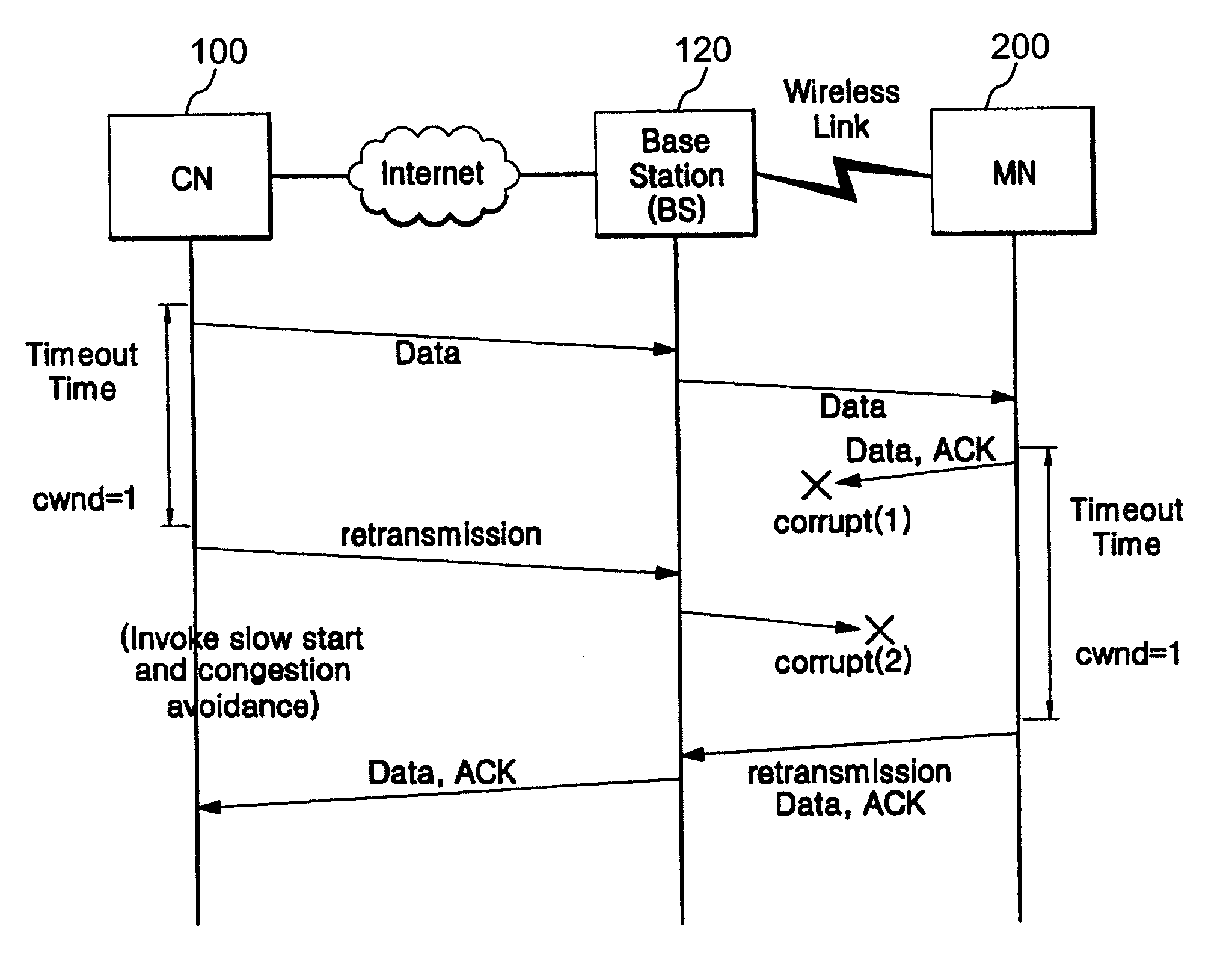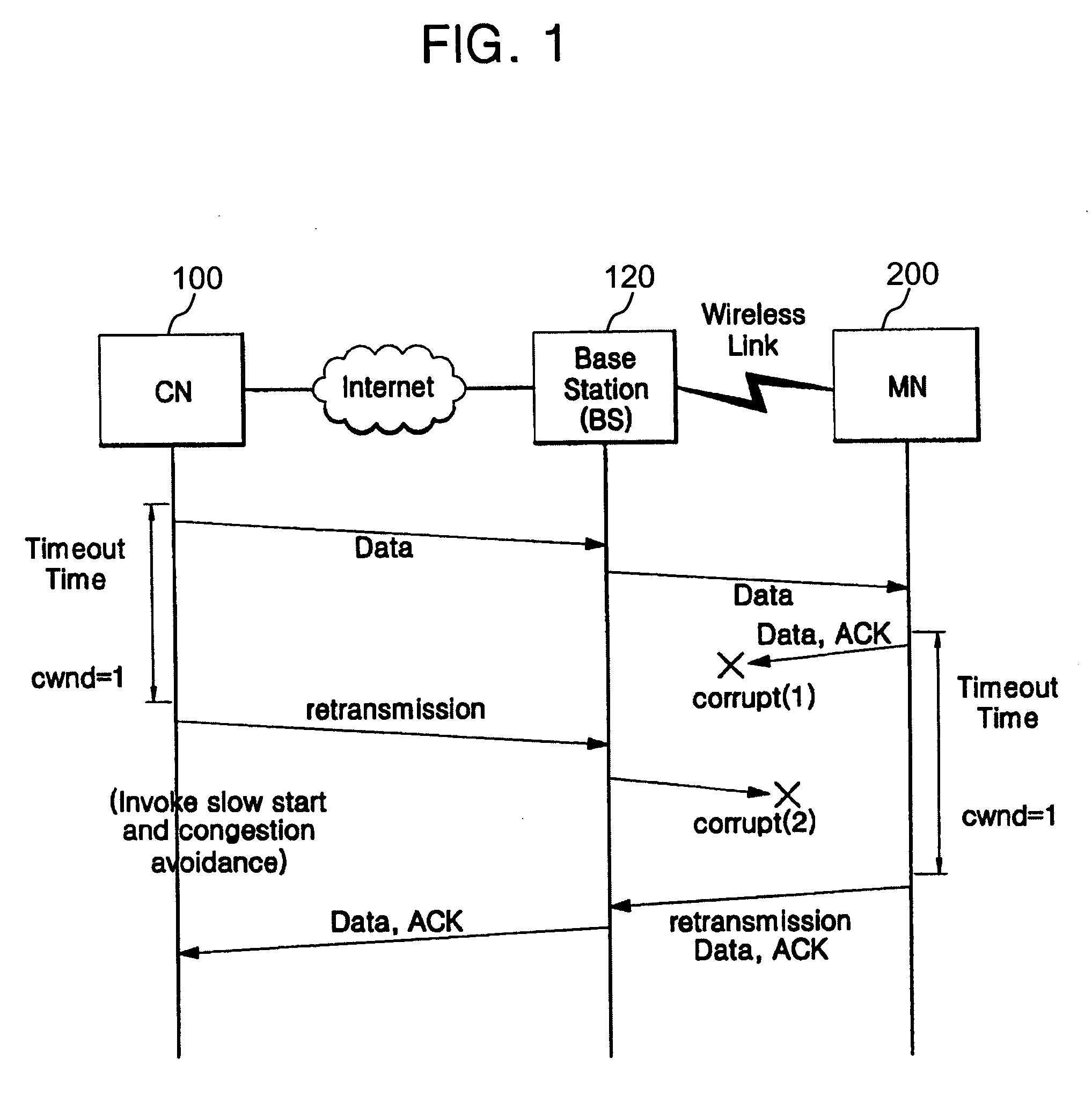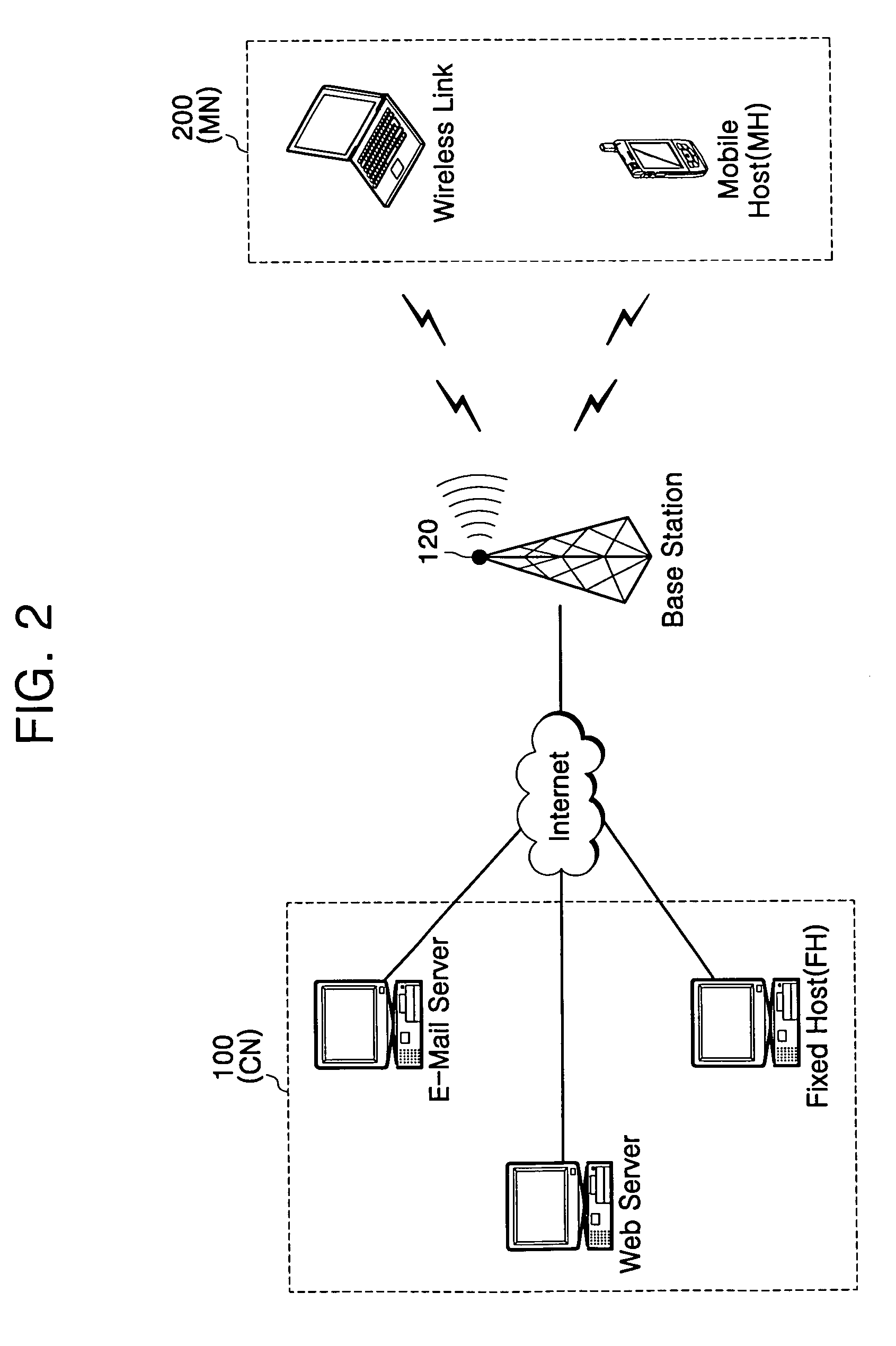Transmission control protocol (TCP) congestion control using multiple TCP acknowledgments (ACKs)
a technology of congestion control and transmission control protocol, applied in data switching networks, frequency-division multiplexes, instruments, etc., can solve the problems of packet loss, performance degradation between nodes, and most of packet loss in wired networks, and achieve the effect of simple and effective compensation of tcp performance degradation
- Summary
- Abstract
- Description
- Claims
- Application Information
AI Technical Summary
Benefits of technology
Problems solved by technology
Method used
Image
Examples
Embodiment Construction
[0058]FIG. 1 is a view of a packet loss procedure where a common TCP congestion control algorithm is applied to a wired-wireless integrated network.
[0059] That is, FIG. 1 is a view of the reason that performance degradation takes place when a congestion control algorithm used in TCP protocol is applied as is to a wired-wireless integrated network. First, data is transmitted from a CN to an MN. The MN transmits corresponding data in response to the data from the CN. However, as packet collapse (Corrupt 1) takes place in the wireless link, the CN fails to receive an “Ack” packet during a time-out period. Then, the CN 1 misunderstands that the network is congested, and invokes the congestion control algorithm to start at a low rate as well as the congestion avoidance algorithm to reset the size of a congestion window to 1.
[0060] As described above, the congestion window value is the maximum number of packets that can be transmitted in TCP without any response from a correspondent. So...
PUM
 Login to View More
Login to View More Abstract
Description
Claims
Application Information
 Login to View More
Login to View More - R&D
- Intellectual Property
- Life Sciences
- Materials
- Tech Scout
- Unparalleled Data Quality
- Higher Quality Content
- 60% Fewer Hallucinations
Browse by: Latest US Patents, China's latest patents, Technical Efficacy Thesaurus, Application Domain, Technology Topic, Popular Technical Reports.
© 2025 PatSnap. All rights reserved.Legal|Privacy policy|Modern Slavery Act Transparency Statement|Sitemap|About US| Contact US: help@patsnap.com



